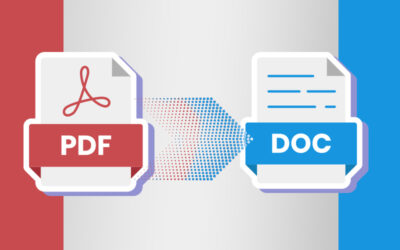Despite the availability of professional document scanning services and rapid advances in digitization, paper documents still hold sway in some offices. Any business looking to improve efficiency and productivity and save time should consider converting paperwork into flexible electronic formats as a top priority. Paper documents are costly to manage and pose significant risks for businesses.
According to a study by the Association for Information and Image Management (AIIM) published in 2015, only 17% of employees work in a paperless environment. DataScope discusses a study by QuePublishing which reported that the average U.S. office worker uses more than 10,000 sheets of paper per year, which amounts to about 2 cases of paper per employee. With an average price of $40 for a case of standard copy paper, this adds up to $80 annual cost per employee. The main costs of paper documentation are copying, delivery, handling, storage, and retrieval of that paper, with copying costs at 33% and distribution costs at 56%.
Let’s look at the many reasons why paper documents pose a risk for businesses.
-
- High Costs: Managing, handling and storing paper documents is costly and involve considerable resources for filing, archiving and use. Large volumes of paper documents require bulky and expensive cabinets to store. That would take up a lot of physical space which could have been to more productive use. Also, paper documents cost to ship out.
-
- Drop in Efficiency and Productivity: When paper files piles up, information becomes difficult to find. Paper can be moved around from place to place and is difficult to organize. In 2013, Gartner reported that professionals spend 50% of their time searching for information, and on average, take 18 minutes to locate each document. The risks are greater with paper documents. If the required information is not easily and quickly accessible, it will definitely lead to a drop in worker efficiency and a waste of time that could have gone into productive activities.
-
- Security Risks: A PwC study noted that information on paper and its management poses serious security risks, even more than external and digital threats like hacking and malware. Paper documents can get stolen easily. Moreover, not disposing of discarded documents the right way can also compromise what could be sensitive information. For example, in 2018, healthcaredive.com reported on a JAMA study which found that some healthcare organizations risked privacy breaches by disposing of paper-based records in garbage and recycling bins. Personally identifiable information (PII) found comprised over 2000 documents and included patient identifiers, prescriptions, test results and billing forms. Over 1000 documents were labeled “high sensitivity,” which had PII and a description of the patient’s medical condition. Another 843 contained the patient’s diagnosis.
-
- Risk of Fire and Flood Damage: Paper documents are prone to damage by natural disasters, including fire and flooding. A United Nations (UN) report notes that when records are lost or damaged, the office is exposed to several significant risks, such as:
- Operational risk – the inability to meet operational goals and objectives
- Financial risk – the failure to document or financial decisions or expenditures adequately
- Reputational or image risk – the loss of status as a reliable, effective, and accountable agency
- Physical or security risk – the exposure of personnel and facilities to loss or damage
Paper documents increase these risks.
- Risk of Fire and Flood Damage: Paper documents are prone to damage by natural disasters, including fire and flooding. A United Nations (UN) report notes that when records are lost or damaged, the office is exposed to several significant risks, such as:
- Error-prone, Difficult to Access and Share: Paper-based processes are error prone. Putting data on paper is risky because you can misplace files and lose them. You also cannot share information on paper. It is difficult to track a paper trail. For instance, when paper documents have been archived for a long period of time, accessing the archived data in a paper-based system can pose a major challenge.
- Slow: Paper-based processes are slow. Consider the banking sector. According to Tommy Petrogiannis, president of eSignLive by VASCO, an esignature companies founded in 1992, for one bank with over $300 billion in assets, for example, paper-based processes proved to be a waste of money, time and customer trust (tearsheet.co). As documents were filled in and signed by hand, signatures, data or documents were often missing. It took time to correct errors which considerably slowed downed processes.
Today, more and more businesses are becoming become smart about document management. They are making the most of data entry services and document management services to convert their paper files into electronic format. Digitization overcomes many of the challenges of managing sensitive business information. In addition to enabling safe storage on computers or the cloud, electronic documents can be accessed and shared easily and also backed up. Digitization allows you to store large volumes of data without taking up physical storage space.
If you are looking to digitize your information, make sure to partner with a reliable document scanning and data entry company for data capture and extraction.




